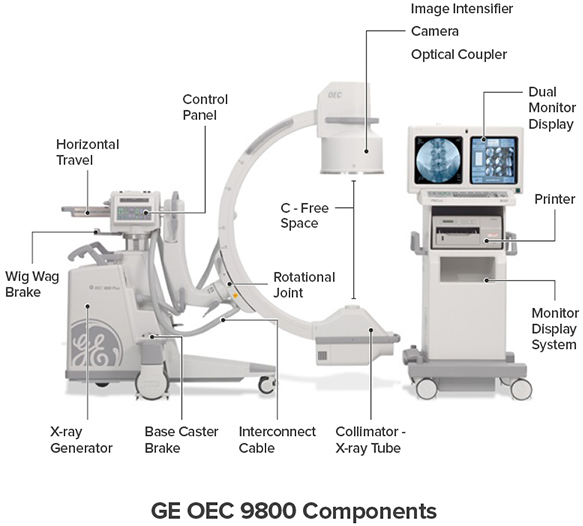FluoroTech Training
Training Objectives:
- Review of current fluoroscopy system technology.
- Techniques for assessing image quality.
- Insight into fluoroscopy image post-processing and advanced imaging techniques.
- Techniques for insuring adequate radiation safety for fluoroscopy systems.
- Procedures specific to measuring, monitoring and tracking patient radiation doses.
- Hands-on demonstrations.


Training Overview
A review of current fluoroscopy system technology. Radiation from C-Arms can be significant, and the systems require continued management and control. The Fluoro Tech plays an invaluable role in assuring the fluoroscopy systems are performing at optimum levels, and that the radiation dose to the patient and personnel is efficiently managed.
Our advanced training encompasses an in-depth review of the fluoroscopic equipment, including proven methods of achieving both optimal image quality and machine performance. Criteria for determining patient exposure levels, potential biological responses and strict management of radiation safety are also covered extensively.
Tech training will include a comprehensive review of the physics of clinical fluoroscopy systems, followed by hands-on laboratory sessions of testing procedures. Training will conclude with a thorough discussion, including a Q&A, specific to professionalism, consistency, mood management, patient vigilance, bedside manner, and other important personal traits that differentiate PMF technicians as a cut above the competition.
10 Basic Rules
that will help you be a Better RT
- 1.Be on Time, or be a little early.
- 2.Do not Gossip! Nothing divides an office faster than gossip as it creates 2 separate teams: the ones gossiping and the ones being gossiped about. We all have issues, and nothing makes us feel better than knowing that other people have the same issues or even worse issues than we have; but the bottom line is that gossip doesn’t help anyone. Your issues didn’t go away, and the target of the gossip is now alienated from people who could have been helpful, and offered support.
- 3.Don’t check social media or email, unless you’re on a break or it’s an emergency.
- 4.Be helpful. After each patient, help the PA transition the room for the next patient.
- 5.Be hyper-vigilant. Just like driving a car, you need to be aware of what is going on all around you, all the time. Your attention should cycle from patient to physician to Image to PA back to patient to physician…. in succession until the procedure is complete, and the patient leaves the room. Watch for sharps disposal, bloody bandages, blood drips, etc. Allow the PA to remove the sharps, and sterilize the area, but help them to locate any misplaced needles, bandages or blood spill. Do not touch any bloody bandages or clean blood spill without latex gloves.
- 6.Do your job well. Each physician is different, and will want to see different views of the same procedure. It is your job to document the physician, the procedure, the angle and view required; and to remember this the next time you do the same procedure.
- 7.Be friendly, but do not become involved with a physician’s staff. Relationships have highs and lows, and physicians and patients require stability in the office.
- 8.Take responsibility. Do not be afraid to make mistakes, and when you do, do not be afraid to take responsibility for it. Everyone makes mistakes, without exception. Only professionals take responsibility for their mistakes and learn from them.
- 9.Do not linger. When the last patient has been seen, the procedure room is in order, and the physician no longer needs you, it’s time to leave.
- 10.Report damage. If the C-Arm or other company equipment is damaged during your shift, then report it immediately. The quicker we know equipment is damaged, the quicker we can have it repaired.





